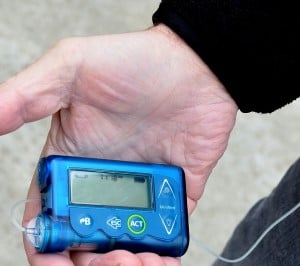Search
Research
The Effect of Hypoglycemia on Spectral Moments in EEG Epochs of Different Durations in Type 1 Diabetes PatientsThe potential of using an electroencephalogram (EEG) to detect hypoglycemia in patients with type 1 diabetes has been investigated in both time and frequency domains. Under hyperinsulinemic hypoglycemic clamp conditions, we have shown that the brain's response to hypoglycemic episodes could be described by the centroid frequency and spectral gyration radius evaluated from spectral moments of EEG signals.
Research
Cohort Profile: HABITAT-a longitudinal multilevel study of physical activity, sedentary behaviour and health and functioning in mid-to-late adulthoodThe benefits of physical activity in reducing the risk of non-communicable diseases are well documented. Physical inactivity contributes to 6–10% of the burden of coronary heart disease, type 2 diabetes, and breast and colon cancers.
Research
Effect of Exercise Intensity on Exogenous Glucose Requirements to Maintain Stable Glycemia At High Insulin Levels in Type 1 DiabetesUnder basal insulin levels, there is an inverted U relationship between exercise intensity and exogenous glucose requirements to maintain stable blood glucose levels in type 1 diabetes (T1D), with no glucose required for intense exercise (80% V̇O2 peak), implying that high-intensity exercise is not conducive to hypoglycemia.
Research
Advanced glycation end products as predictors of renal function in youth with type 1 diabetesTo examine if skin autofluorescence differed in early adulthood between individuals with type 1 diabetes and age-matched controls and to ascertain if sAF aligned with risk for kidney disease.

News & Events
How to support a friend who has type 1 diabetesClinical psychologist from the Children's Diabetes Centre Dr Keely Bebbington has some top tips on how to support a friend who has type 1 diabetes.

News & Events
Local researchers lead biggest ‘artificial pancreas’ outpatient studyThe Children’s Diabetes Centre at The Kids Research Institute Australia is leading the longest and largest at-home trial of a hybrid closed-loop insulin pump system.

News & Events
A new approach for research with Aboriginal communitiesWinning the support of a remote Aboriginal community paved the way for a pioneering genetics study.

News & Events
Latitudinal gradient in childhood diabetesNew research from Perth's The Kids Research Institute Australia has shown the local relevance of a worldwide pattern of increased risk of childhood type 1 diabetes.
Research
Hypoglycaemia, fear of hypoglycaemia and quality of life in children with Type 1 diabetes and their parentsTo evaluate the association between fear of hypoglycaemia, episodes of hypoglycaemia and quality of life in children with Type 1 diabetes and their parents.
Research
Effect of sensor-augmented insulin pump therapy and automated insulin suspension vs standard insulin pump therapy on hypoglycemiaSensor-augmented insulin pump with automated low-glucose insulin suspension has the potential to reduce the incidence of major hypoglycemic events.
